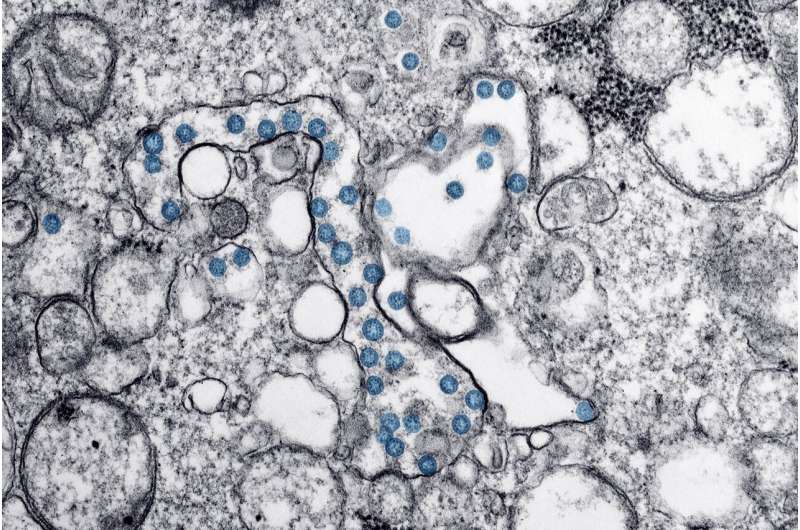Viruses adapt to 'language of human cells' to hijack protein synthesis

The first systematic study of its kind describes how human viruses including SARS-CoV-2 are better adapted to infecting certain types of tissues based on their ability to hijack cellular machinery and protein synthesis.
Carried out by researchers at the Centre for Genomic Regulation (CRG), the findings could help the design of more effective antiviral treatments, gene therapies and vaccines. The study is published today in the journal Cell Reports.
Living organisms make proteins inside their cells. Each protein consists of single units of amino acids which are stitched together according to instructions encoded within DNA. The basic units of these instructions are known as a codons, each of which corresponds to a specific amino acid. A synonymous codon is when two or more codons result in cells producing the same amino acid.
"Different tissues use different languages to make proteins, meaning they preferentially use some synonymous codons over others. We know this because tRNAs, the molecules responsible for recognizing codons and sticking on the corresponding amino acid, have different abundances in different tissues," explains Xavier Hernandez, first author of the study and researcher at the CRG.
When a virus infects an organism, it needs to hijack the machinery of the host to produce its own proteins. The researchers set out to investigate whether viruses were specifically adapted to using the synonymous codons used preferentially by the tissues they infect.
The researchers downloaded the publicly available protein sequences of all known human viruses and studied their codon usage. Based on the known tRNA abundances in different tissues, they then determined how well adapted all 502 human-infecting viruses were at infecting 23 different human tissues.
Viral proteins expressed during the early infection stage were better adapted to hijacking the host's protein-making machinery. According to Xavier Hernandez, "well adapted viruses start by using the preferred language of the cell but after taking full control they impose a new one that meets its own needs. This is important because viruses are used in gene therapy to treat genetic diseases and, if we want to correct a mutation in one tissue, we should modify the virus to be optimal for that particular tissue."
The researchers then took a closer look at how different respiratory viruses are adapted to infecting specific tissues based on their codon usage. They studied four different coronaviruses—SARS-CoV, MERS-CoV, SARS-CoV-2, and the bat coronavirus that is most closely related to SARS-CoV-2—as well as the common flu-causing influenza A virus H1N1.
They found that SARS-CoV-2 adapted its codon usage to lung tissue, the gastrointestinal tract and the brain. As this aligns with known COVID-19 symptoms such as pneumonia, diarrhea or loss of smell and taste, the researchers hypothesize future treatments and vaccines could take this factor into account to generate immunity in these tissues.
"Out of the respiratory viruses we took a close look at, SARS-CoV-2 is the virus that is most highly adapted to hijacking the protein synthesis machinery of its host tissue, but not more so than influenza or the bat coronavirus. This suggests that factors other than translational efficiency play an important role in infection, for example the ACE2 receptor expression or the immune system," concludes Xavier Hernandez.
The researchers next steps include further developing a biotechnological tool to design optimized protein sequences containing codons adapted to the tissue of interest, which may be useful for the development of gene therapies.
More information: Cell Reports (2021). DOI: 10.1016/j.celrep.2021.108872
Journal information: Cell Reports
Provided by Center for Genomic Regulation



















